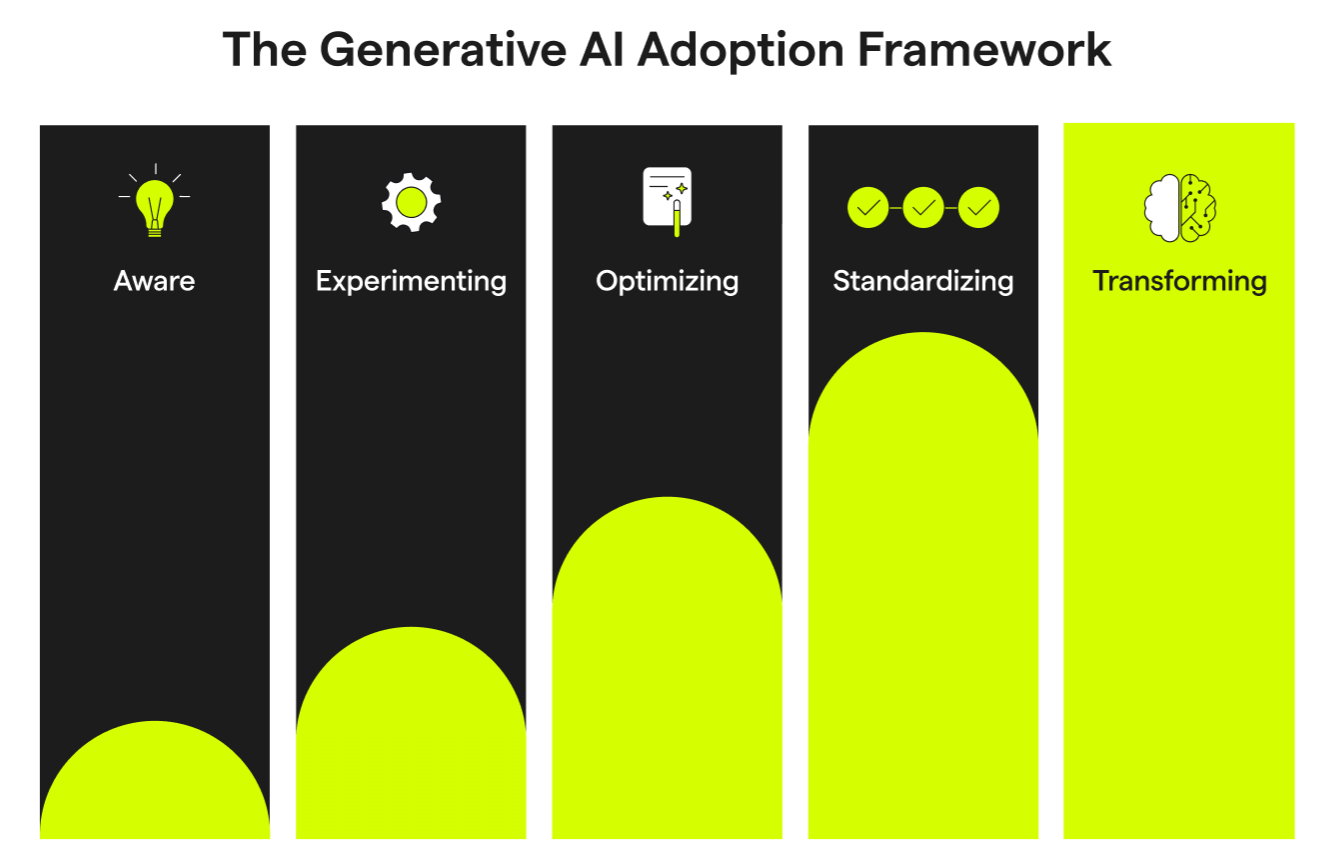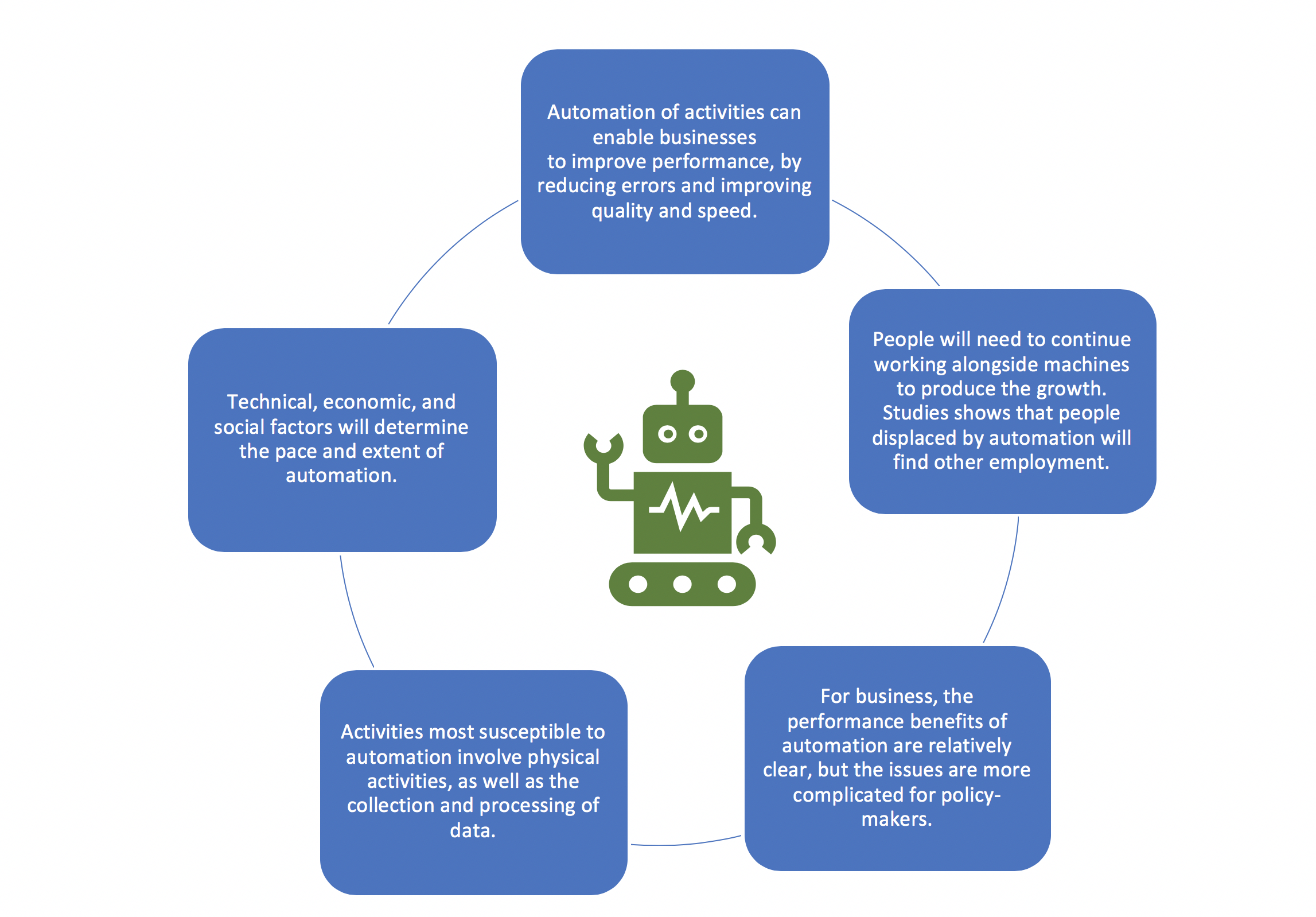Generative AI adoption is rapidly transforming the technological landscape, demonstrating a swift integration into everyday work and home tasks. Since the launch of ChatGPT in late 2022, this innovative technology has captivated users simultaneously showcasing its potential in various aspects of life. Recent research reveals that nearly 40% of Americans have engaged with generative AI, outpacing the technology adoption rates observed during the early days of personal computers and the internet. As businesses increasingly implement AI tools in the workplace, understanding the impact of AI on productivity and efficiency becomes crucial. The implications of generative AI extend far beyond mere novelty, shaping the future of AI in business and offering expansive new opportunities for growth and innovation.
The swift embrace of generative artificial intelligence marks a pivotal moment in the evolution of modern technology. This cutting-edge approach to AI not only fascinates users but also redefines operational efficiency across various platforms. Early adopters of AI-driven tools like ChatGPT are witnessing firsthand how this technology can enhance both personal and professional endeavors. As companies harness these advancements, the repercussions of AI on workplace dynamics and strategic decision-making will undoubtedly redefine how we perceive technology. With impressive statistics highlighting the vigorous uptake of generative AI, businesses must not overlook the transformative potential that this innovative tool holds.
Generative AI Adoption: A Rapid Transformation in the Workforce
Recent studies reveal that generative AI is being embraced at a pace that outstrips historical technology adoption rates. Nearly 40% of U.S. adults between the ages of 18 and 64 have leveraged generative AI tools like ChatGPT for various tasks. This rapid adoption reflects not only the technology’s versatility but also its transformative potential in the workplace and home environments. The findings suggest that as generative AI becomes integrated into daily activities, it may lead to significant shifts in how we approach tasks traditionally managed by humans.
The swift uptake of generative AI can be attributed to the foundational technologies that preceded it, such as personal computers and the internet. With these systems already in place, individuals are able to implement AI tools seamlessly into their workflows. Moreover, the demographic variance observed in adoption rates highlights an interesting trend: younger, more educated individuals, particularly those in white-collar jobs, are leading this charge. Their comfort with technology likely fuels the acceleration of integrating AI-driven efficiencies into various occupational roles.
Frequently Asked Questions
What is generative AI adoption and why is it significant in 2024?
Generative AI adoption refers to the integration and utilization of generative AI tools, like ChatGPT, within various sectors. In 2024, this adoption is significant because nearly 40% of Americans have engaged with generative AI for personal or professional tasks, showcasing a rapid acceptance rate surpassing earlier technological innovations such as personal computers and the internet.
How do generative AI adoption rates compare to past technology adoption rates?
Generative AI adoption rates are strikingly high, with almost 40% of U.S. adults using it since its launch. This rate is faster compared to the personal computer and internet, which saw only 20% adoption within their first few years. The swift integration of generative AI is indicative of its foundational support from existing technologies like computers and the internet.
What roles do younger generations play in generative AI adoption in the workplace?
Younger generations are key drivers of generative AI adoption in the workplace, with significantly higher usage rates compared to older demographics. This trend mirrors historical patterns in technology adoption and suggests a shift in workplace dynamics, where younger employees are more inclined to utilize AI tools to enhance productivity.
What are the primary uses of AI tools like ChatGPT in the workplace?
In the workplace, AI tools like ChatGPT are primarily used for tasks like drafting emails, researching information, and obtaining procedural documentation. Their versatility allows employees across various occupations to integrate generative AI into everyday tasks, enhancing efficiency and accuracy.
What demographic factors influence the adoption of generative AI in business settings?
Demographic factors such as age, education level, and occupation significantly influence generative AI adoption in business. Men, younger individuals, and those in white-collar jobs tend to use generative AI more frequently, highlighting the need for businesses to consider these demographics in their AI strategy.
What implications do current generative AI adoption trends have for businesses?
Current trends in generative AI adoption suggest that businesses should prioritize understanding and integrating AI technologies into their operations. Companies that can harness generative AI effectively are likely to gain a competitive advantage, much like those who adopted personal computing early in its lifecycle.
How is generative AI transforming workplace efficiency according to studies?
Studies indicate that generative AI is transforming workplace efficiency by automating repetitive tasks, facilitating faster information retrieval, and enhancing communication. This technological advancement not only streamlines workflows but also empowers employees to focus on more strategic initiatives.
What can business leaders learn from the swift generative AI adoption rates?
Business leaders can learn that swift generative AI adoption signals a pivotal shift in technological reliance. Similar to early adopters of the internet and PCs, leaders should investigate how to implement generative AI to improve operational efficiency and innovate product offerings.
What is the future outlook for generative AI in various industries?
The future outlook for generative AI across various industries is promising, with the potential for widespread integration into daily operations. As businesses explore various applications, those that successfully adapt will likely see substantial growth and enhanced productivity driven by AI technologies.
What challenges might arise with increased generative AI adoption in workplaces?
Challenges that may arise with increased generative AI adoption include data privacy concerns, reliance on AI-generated content without proper oversight, and potential job displacement in certain roles. Businesses should navigate these challenges by establishing clear guidelines and fostering a balanced approach to incorporating AI.
| Key Points |
|---|
| Generative AI adoption rates are faster than those of the personal computer and internet, with nearly 40% of Americans having used the technology as of August 2024. |
| 28% of employed individuals use generative AI at work, whereas nearly 33% use it in personal settings. |
| Demographics show that usage is higher among men, younger people, and those with higher education levels. |
| Generative AI is being utilized for various tasks in both professional and non-professional settings, notably in STEM and management careers. |
| Informal adoption is widespread, with many individuals using generative AI for tasks like writing emails or researching information, often without formal workplace guidelines. |
| Executives should take note of generative AI’s growth, as early adopters can leverage it for significant business benefits. |
Summary
Generative AI adoption is reshaping workplaces and daily tasks at an impressive speed, indicating its potential to significantly impact both individuals and businesses. As this technology continues to permeate various aspects of life, understanding its usage and implications is crucial for leveraging its capabilities effectively. The rapid embrace of generative AI highlights a transformative shift in how we approach work, communication, and data management, making it imperative for businesses to adapt promptly and strategically.



